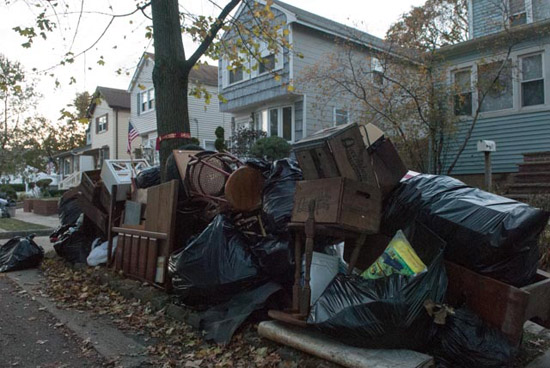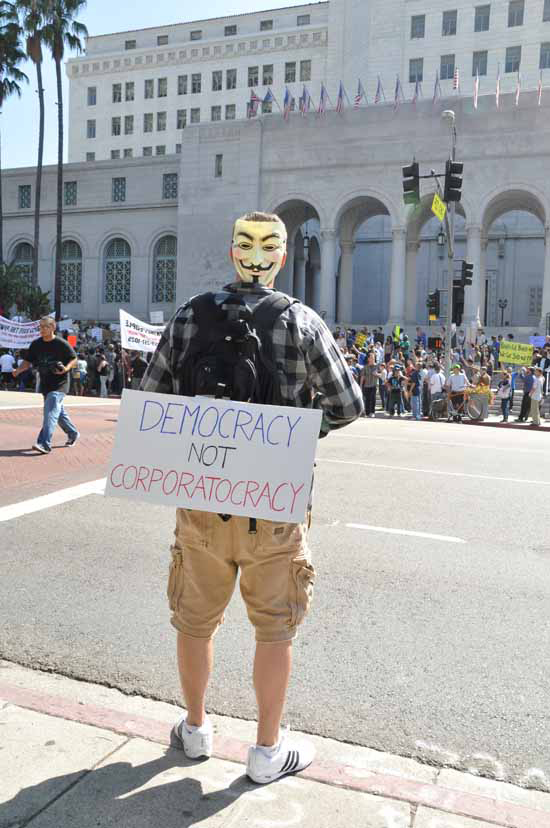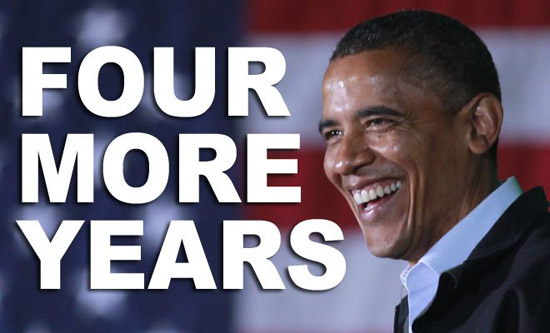by Julia C. Reinhart

While President Obama tried to improve the plight of the homeless, a President Romney wouldn’t even try. Without a major change in Congress, the fate of America’s homeless is unlikely to improve. States just don’t have money to deal with the problem.
With the US Presidential elections upon us, much is still talked about the economy, foreign policy, and ‚yes, whether Barack Obama is actually a naturally born citizen, and thus eligible to be president – never mind it’s the job he has held for the past four years. Conservative Republicans trip over themselves in making offensive statements about abortion and rape, scaring women voters with a sense of self-determination. Liberal pundits meanwhile try to outbid themselves in doomsday scenarios on how the world would end should Mitt Romney be elected. None of these realize that there is a group of Americans who will be losers, no matter who wins the race for the White House: Middle and lower class Americans, from a high school teacher all the way down to the homeless man on the street.
The big white elephant in the room that rarely gets discussed during American electoral politics is the systematic neglect of the country’s infrastructure, and the policy consequences that have sprung from that, especially in the area of affordable housing and combating homelessness. According to a white paper published by the Political Research Institute at Brown University, non-military infrastructure spending in the United States from school buildings to highways and affordable housing has declined from 3.8% to 1.8% of all government held assets between 1951 and 2011. Since then, the country has seen six Republican and six Democratic presidents, hence this is hardly a partisan issue. Core elements of the infrastructure, such as electricity grids and phone systems, have been economized, meaning that profitability aspects drive availability and maintenance rather than need.
In rural areas as well as in low income neighborhoods in large cities, electrical grids are regularly delivered via overhead lines, as there are fewer customers and those that buy the services can’t afford the added value services that drive corporate profits. Meanwhile in areas of high density and high income, electrical wires tend to run underground, protecting them from falling trees, swirling tornados, and heavy snowfalls brought on by America’s often harsh weather patterns. Power outages in New York City brought on by Hurricanes Irene and Sandy are an illustrative example: While Irene brought on heavy rains over the five boroughs of the world’s financial capital, Manhattan suffered some flooding but little lasting consequence once the storm passed. Long Island and low lying areas of Brooklyn and Queens however, which are more exposed to cross-winds from the sea, and also subjected to the storm surge brought on by the Hurricane suffered measurable structural damage, downed trees and power lines, and about 4 feet of flood waters covering the lowest parts of Long Island’s southern shore and Staten Island, bringing on substantial beach erosion, but no deaths.
If Irene was a dry run, it did not prepare New York City’s infrastructure for a storm the size and power of Hurricane Sandy. While government officials went through the same preparation proceedings that helped them safeguard the city’s 8.5 million population during Irene, little was done to improve or protect the power grid from flooding. For days, weather forecasters announced that the storm surge with Sandy could be significant, and sandbags were duly deployed around lower Manhattan – rows of them 1-2 feet high leaning against doors and entranceways of buildings. Yet the South Ferry subway tunnel remained open towards the sea, and many of the transformer stations run by Con Edison, the local utility company, that were underground did not receive sufficient flood proofing.
So, when the storm surge came, transformer stations blew out as electric equipment, under high voltage at the time, was introduced to salt water, an explosive and corrosive mixture that left half of Manhattan and significant parts of Brooklyn, Queens, and Staten Island in the dark. Subway tunnels flooded from above when the East and Hudson Rivers jumped their embankments and from below once water pushed into the South Ferry Tunnel and from there all the way up through the system. This time, the infrastructure shortages were hard to ignore, because they also significantly affected Manhattan. Weather damages in the outer boroughs, while having a significant impact on the local communities, go largely ignored in the public discourse of the city. Government officials, most of them Governor Andrew Cuomo are now loudly calling for infrastructure improvements in light of changing weather patterns.
While a good part of Manhattan’s intellectual elite, who live in areas like SoHo, Chelsea, and other Lower Manhattan neighborhoods, had to survive several days without power and water, leaving fresh food, drinking water and cell phone coverage in short supply, the worst impact of the storm disproportionally affected blue-collar and low income communities. Affordable housing in New York City is in short supply, and the housing projects and affordable single family homes that do exist are built on relatively cheap land, low lying areas and landfills that no high-level real estate developer would touch or use. Also, much of the lower priced single family homes were build before 1970, making for an aging housing stock build from cheap materials, which have a harder time resisting high winds and rising waters. Gas and waterlines tend to be old, cell phone coverage spotty even at the best of times, and power lines more often than not run tangled above ground. With the power out for as much as two weeks, and temperatures falling to the freezing mark, elderly residents of affordable housing units have already started to die from exposure. As the freeze and the power outage in the outer boroughs continues, many more may follow.
Many residents of public housing projects live on welfare and food stamps, a government allowance of $200 / month for a single person or $367 / month for a family of two. This amount often barely covers their basic needs for feeding their families, and leaves them ill-prepared to carry the extra burden of stocking up on food reserves when storms approach. The Rockaways, a particularly hard hit, and also very poor part of Queens located on a barrier island in the Long Island sound, saw survivors of Hurricane Sandy scrounge for food when emergency relief aid was slow to arrive. All the power lines to the island were cut, the bridge for cars was closed, and the subway tracks were flooded. Residents of the Rockaways were trapped on their island with little ability to go search or receive aid supplies, leaving them both cold and hungry for days before government relief services ramped up.
The lack of affordable housing combined with an outdated attitude towards the causes of homelessness is also one of the key drivers behind the city’s rising homeless population. In the early 1970s, as scores of veterans returned from Vietnam and struggled to re-integrate into society, many of the ideas shaping today’s governmental policy towards poverty and homelessness were formulated, operating on what then were perceived to be the key factors for homelessness: Drug or alcohol abuse, and mental illness. Unemployment, while existent, was less perceived to play a role. Fatima Shad‚ a Red Cross worker focusing on homeless outreach explains: “They thought, you choose to be homeless, and yes, they basically assume that it’s your fault that you’re homeless, you had to be a druggie, a drunk, crazy, or all three.”
The mentally ill have formed a large group among the homeless population, ever since the US government started to shutter mental health institutions in the 1950s, leaving many in need of serious long-term care without a support network that could keep them in a home. Many of the Vietnam veterans who wound up homeless did have mental and substance abuse issues, as did many other homeless who followed.
However, as Shad points out, the face of homelessness is changing dramatically: A long-standing trend of redevelopment and gentrification started in the 1960s, where entire poor neighborhoods are condemned and leveled to make room for real estate development projects that promise higher tax revenues to city and state governments. Due to a lack of funding for alternative low income housing and the recent flood of foreclosures brought about by the 2008 financial crisis, this gentrification process has given rise to a new form of homeless population: Those who simply can no longer afford to pay the rent or mortgage, because they’re either underpaid or underemployed. If you go into the housing courts, they’re packed, and everybody is two seconds away from an eviction: Shad explains: “It doesn’t stop. Monday morning through Friday night, case after case, people are begging marshals for mercy, and the court system, depending on the borough you’re in, might be a little more lenient, giving you another week or two before you’re being evicted. But once people go to shelters, if they don’t go to somebody’s sofa, they’re entering a very challenging world.”
It is also important to note that homeless statistics provided by the New York City government only count those actually housed in shelters. They don’t count people living on somebody’s couch, those living in subways, or those on the street who are not in a shelter environment. The official number of shelter beds in New York City is 46,000, which is the number of homeless Mayor Bloomberg keeps quoting. However, the number of people actually without a permanent home of their own is a high multiple of that. Most that do enter the shelter system are either part-time or fulltime workers, and get assigned to so-called “working shelters” where every resident is working.
Once homeless, keeping down a job becomes incredibly difficult. The New York City shelter system – still operating on the assessment that anyone homeless must have mental and substance or alcohol abuse issues – requires residents to attend a rigorous schedule of meetings and assessments in order to comply with requirements that allow them to stay. The appointments range from medical and psychological assessments, to workplace trainings. If a homeless person still has a full-time job, keeping these appointments is extremely difficult, as they’re usually set during business hours. This way a homeless person is trapped in a catch-22: On the one hand they have to go to work to earn a living that may be able to get them back on their feet and back to permanent housing, on the other hand, if they don’t keep the appointments requested by the shelter system, they get thrown back out into the streets. Once inside the shelter system many homeless do wind up losing their jobs, as employers tend to be unsympathetic with regards to the absences required by the shelter system. As Shad puts it, the homeless are being put on a hamster wheel with little chance of ever getting anywhere meaningful – and she thinks that is entirely by design.
Homeless shelters in New York City are private enterprises, which are reimbursed by the city for each bed and service they provide. For every mandatory meeting and assessment, the shelter receives a fee from the city in addition to the fees billed for the beds they provide. Furthermore, a homeless person that qualifies for food stamps gets their allowances confiscated by the shelter system, on the basis that they are being provided with three meals a day. A single person, who would normally receive $200 a month, is left with only $16.50 a month in food stamps for personal use. However, many in the shelter system are either on appointments or at work when the meals are served, so they miss out on them and are forced to find alternate sources for food.
If a homeless person works, the money that could be saved up for the security deposit on an apartment must so be used to buy food instead. Also, the meals that are served in the shelter system are highly dubious in nutritional value. No consideration is given to vegetarians, or those in need of a heart-healthy diets or ones for other specialist medical needs. Shad calls it “straight-up slop.”
One way to address the shortage of funds for food is to apply for public assistance, which results in more meetings and appointments for the shelter resident to attend, making it even more difficult for the person to keep down a fulltime job while conducting all the appointments and meetings imposed by the public assistance and housing authorities. In this day and age, and particularly in this economy it’s impossible for a person to do all these appointment and keep down a job. Shad elaborates, “More and more people come crying to me saying ‘I just lost my job.’ And when I ask why, they say, ‘I had to go to my public assistance meeting or I’d be kicked out of my shelter.’”
To make matters worse, Shad contends that shelter officials often schedule competing appointments with the public assistance authorities to compound the complications. Remember, they think it’s your fault you’re homeless, so you’re not supposed to succeed, because in their eyes you can’t.
Another side effect of a shelter resident applying for public assistance is that the shelter will receive a rent allowance in addition to the government subsidy these shelters receive for offering beds to homeless. Shad continues, “From there it just goes on and on, this is a money making enterprise. It’s human warehousing at its finest.”
The shelter system is incentivized to see its residents fail at re-integration. And how’s it even possible if there’s no affordable housing. Lack of investment in new stock has ensured that waiting lists for the homes that do exist are several years long. Voucher systems, which subsidized 70% of a person’s rent in the first year with an option of 50% subsidy in a second year, called Advantage systems, were introduced under President Clinton as a stop-gap measure to help reintegrate homeless shelter residents into the regular rental market. However, in the meantime, only very few new affordable housing units where built, and many landlords, especially in New York City, abused the system, by charging 30% above regular rates. With increasing budget pressures brought on by the 2008 financial crisis on federal, state, and city budgets, funding for these vouchers was finally cut completely in mid 2012. According to the Annual Homeless Assessment Report to Congress prepared by the Department of Housing and Urban Development (HUD), 40% of homeless today are families, usually a single mother and children. Many of these families had Advantage housing vouchers that allowed them to transition out of a shelter into regular apartments. With the end of the Advantage voucher payments many of these families are now moving back into an already overcrowded shelter system.
Adding to the problem is the waves of veterans returning from Afghanistan and Iraq, many of whom are suffering from PTSD. While President Obama has talked on occasion about addressing homelessness amongst veterans, recently saying at a campaign event that “nobody who serves, nobody who fights for this country should have to fight for a job or a roof over their heads when they come back home,” little has been done in terms of tangible policy achievements. While his 2009 stimulus package did include allocations for affordable housing, his primary focus in this area was on mortgage owners under threat of foreclosure to refinance. However, Obama’s Affordable Refinance Program wound up helping only a small number of the targeted recipients, leading the Republican controlled house to kill the foreclosure relief program in 2011, calling it a waste of money, since the program only helped about 750,000 distressed homeowners, instead of the targeted 7 million. According to a Congressional Panel that studied the program before it ended, a major reason for the program’s failure was that “loan servicers, who act as middlemen between the distressed homeowners and the investors who own the mortgage, often find it more profitable to foreclose than to modify.” In his 2012 State of the Union address, Obama announced revisions to the program aimed at simplifying the process, but the plan is still awaiting Congressional action.
In 2010, Obama announced a plan, called “Opening Doors” that would, as he claimed, end homelessness in American by 2020. Lauded by advocates of homelessness issues as a major breakthrough, the initiative ultimately went nowhere as Congress declined to provide the $1 billion in funding it required.
Republican presidential candidate Mitt Romney, meanwhile, when touring Louisiana in September for his campaign, told victims of Hurricane Isaac, who became homeless after the storm to “Go home and call 211” – the number that provides information about health and human service programs to Louisiana residents. According to his campaign website, Romney’s housing plan consists primarily of making the government sell the roughly 200,000 homes currently vacant due to foreclosure and an easing of bank regulations to “restore a functioning marketplace and restart lending to creditworthy borrowers.” This plan also calls for an end to Fannie Mae and Freddie Mac, two government agencies who underwrite most mortgages issued to middle and low-income homebuyers. Those already without a home are not mentioned in Romney’s policy papers at all.
While President Obama tried, but failed, to improve the plight of the homeless, a President Romney wouldn’t even attempt to alleviate their plight. Without a major change of heart in Congress, the fate of America’s poor and homeless is unlikely to improve, no matter who wins the election today.
Related Posts
Blood And Thunder: New York After Hurricane Sandy
Occupy Wall Street Crowdsources Sandy Relief




























